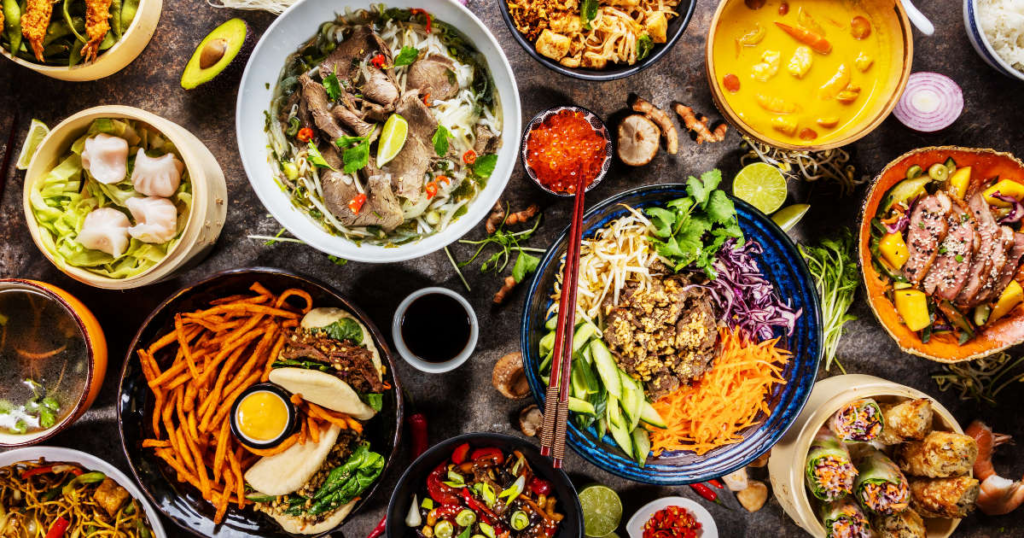
Culinary tourism, a delightful intersection of travel and gastronomy, has become a global phenomenon. In this article, we’ll delve into the fascinating world of hidden gems in culinary tourism, exploring the uncharted territories of flavors, traditions, and cultural richness.
Introduction
Embarking on a journey that tantalizes your taste buds and enriches your cultural understanding is the essence of culinary tourism. In recent years, this trend has gained immense popularity, with food enthusiasts seeking more than just standard dining experiences. Let’s unravel the hidden gems waiting to be discovered in the realm of culinary delights.
Defining Culinary Tourism
Culinary tourism is not just about eating; it’s a holistic experience that goes beyond the act of dining. It involves exploring local markets, interacting with chefs, and understanding the stories behind each dish. It’s a journey that engages all the senses, making it a truly immersive adventure.
Rising Popularity of Culinary Tourism
Social media platforms have played a pivotal role in the surge of culinary tourism. Food bloggers and influencers sharing their gastronomic escapades have sparked curiosity and inspired many to venture beyond familiar territories. The hashtag #FoodieAdventure has become a virtual gateway to a world of hidden culinary treasures.
Exploring the Unexplored: Hidden Food Destinations
While popular tourist spots often offer well-known culinary delights, the true gems lie off the beaten path. Exploring hidden food destinations introduces travelers to authentic, local flavors that remain undiscovered by the masses. From quaint street food stalls to family-run eateries, these hidden gems promise unique culinary experiences.
Dive into Local Cuisines
One of the joys of culinary tourism is embracing the authenticity of local cuisines. Each region boasts its own culinary identity, with dishes rooted in history and tradition. Travelers are encouraged to step out of their comfort zones and savor regional specialties that define the cultural tapestry of a destination.
Culinary Traditions and Cultural Significance
Food is more than sustenance; it’s a reflection of culture and tradition. Culinary tourism provides a gateway to understanding the cultural significance of dishes, the stories behind recipes, and the rituals associated with food preparation. It’s a bridge that connects people through shared culinary experiences.
Tips for the Ultimate Culinary Adventure
Planning a culinary-focused itinerary involves more than just choosing restaurants. To truly immerse oneself in the local food scene, connecting with local food enthusiasts, attending cooking classes, and exploring markets are essential steps. These interactions elevate the culinary adventure from a mere tourist activity to a personal and enriching experience.
Bridging Gaps through Food
One of the remarkable aspects of culinary tourism is its ability to break down cultural barriers. Sharing a meal transcends language and connects people on a fundamental level. The universal joy of enjoying good food fosters understanding and camaraderie among diverse communities.
The Impact of Culinary Tourism on Local Economies
Beyond the pleasure it brings to travelers, culinary tourism has a significant impact on local economies. Supporting local restaurants, markets, and artisans contributes to the sustainability of communities. Travelers become not just consumers but active participants in the economic well-being of the places they visit.
Challenges and Solutions in Culinary Tourism
While culinary tourism is immensely rewarding, it does come with challenges. Language barriers, unfamiliar ingredients, and navigating local customs can be hurdles. However, with careful planning, an open mind, and a sense of adventure, these challenges can be overcome, turning potential obstacles into memorable aspects of the journey.
Food Photography and Social Media in Culinary Tourism
In the age of Instagram and Pinterest, visuals play a crucial role in shaping culinary experiences. Food photography has become an art form, with travelers capturing and sharing their meals, creating a visual narrative of their culinary adventures. Social media platforms serve as a virtual community where food enthusiasts exchange recommendations and tips.
Sustainability in Culinary Tourism
As travelers become more conscious of their impact on the environment, the concept of sustainable culinary tourism is gaining traction. Choosing eateries that prioritize local and ethically sourced ingredients, reducing food waste, and supporting eco-friendly practices contribute to a more sustainable and responsible form of food tourism.
Memorable Culinary Experiences: Personal Stories
Real-life stories of memorable culinary experiences add a personal touch to the narrative. From stumbling upon a hidden gem in a small village to sharing a meal with locals, these anecdotes highlight the transformative power of culinary tourism. Each story becomes a cherished memory, encouraging others to seek similar experiences.
Future Trends in Culinary Tourism
The world of culinary tourism is dynamic, with new trends constantly emerging. As we look ahead, we anticipate an increase in interest for undiscovered destinations, a rise in culinary-focused travel events, and a growing appreciation for hyper-local and niche food experiences. The future promises even more exciting opportunities for food enthusiasts.
